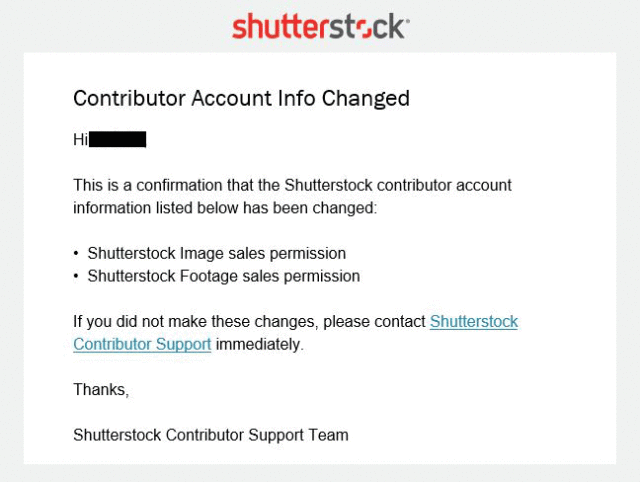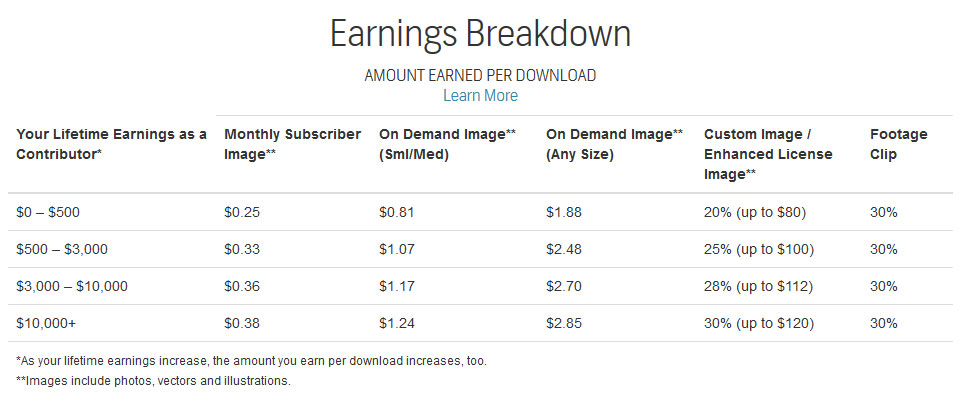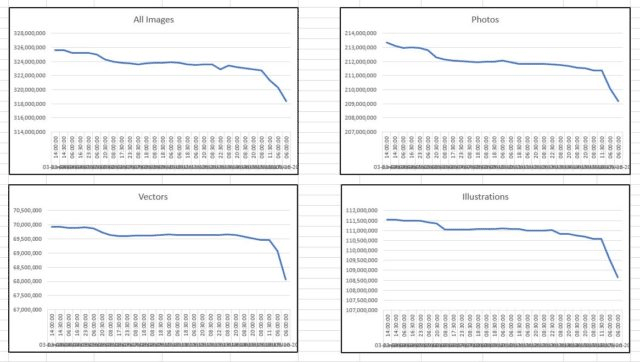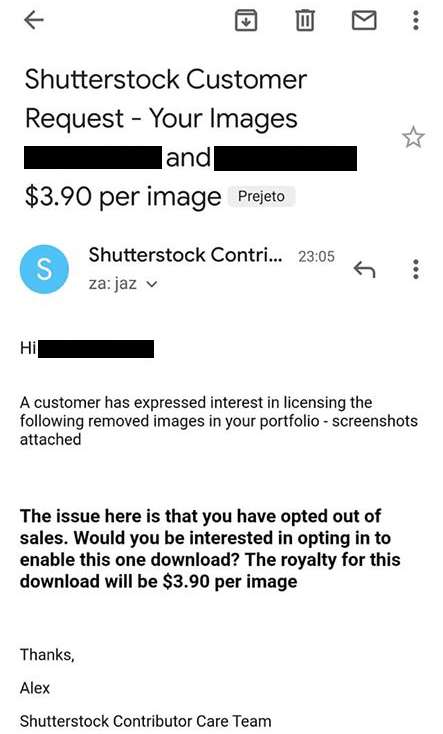Thousands of furious Shutterstock contributors have banded together under the umbrella of the Stock Coalition, disabling their portfolios and removing an estimated 8 million images from the microstock agency archive. The official campaign, Shutterstock Deactivation Day (D-Day), began on June 15 and will run until the end of the month to fight the contributor pay cut rolled out on June 1.

Despite weeks of continuous backlash from contributors, Shutterstock remains unmoved. The goal of D-Day is to negatively impact Shutterstock’s Q2 financial results. Recorded on June 30, a key metric measuring Shutterstock’s quarterly performance is its contributor and archive growth.
Shutterstock D-Day is an effort by the newly formed Stock Coalition, which has over 4000 members united against Shutterstock’s controversial contributor pay cut.
‘Many other Shutterstock contributors have (already) deactivated or deleted their portfolios entirely,’ Dimitar Gorgev, Stock Coalition spokesperson and Macedonian Shutterstock contributor, told Inside Imaging. ‘Before now there wasn’t an organisation joining contributors to coordinate their efforts – contributors were doing this on their own.
‘Many of those deactivating or deleting their portfolios are high-quality stock producers. Those frustrated by low royalty rates are often those who rightfully value their work. It’s critical that agencies are able to keep these high-quality producers on their books, because it’s their content the buyers are looking for. Buyers will be left with limited choice and will have to look elsewhere for the top-notch, quality material they used to find at Shutterstock.’
On May 26, Shutterstock announced a new contributor earning schedule, effective from June 1, which determines contributor payments based on the volume of images licensed each year. Contributors across the board reported record low payments of US$0.10, a drop compared with the typical US$0.25-0.38 fee previously earned.

Shutterstock has under-performed on the New York Stock Exchange, and while the pay cut is an attempt to improve its financials, the company’s internal operating expenses are growing at a much larger rate than the growth of contributor payments. Read about Shutterstock’s financials here. Over the last 52 weeks, Shutterstock shares are down by almost 20 percent, while the S&P 500 is down just -0.42 percent.
‘Contributors have dedicated so much time and energy into creating quality content that helped build Shutterstock to what it is and for them to make this move feels like a major betrayal,’ Dimitar said.
Shutterstock is waiting for all of this to blow over. And while the backlash was likely expected, it’s doubtful Shutterstock’s new management, including recently-appointed CEO Stan Pavlovsky, anticipated contributors would form a lobby group.
The Stock Coalition has a website, press release, and Facebook group with over 4000 members. In the Facebook group there are hundreds of posts by contributors flagging the deactivation of their accounts.
The D-Day campaign progress has been measured by the size of the Shutterstock archive through an empty word search. On June 1, contributor Merab Shonia recorded there were 326 million available files – photos, vectors, illustrations and videos. On June 18, he recorded Shutterstock’s archive had dropped to 318 million. That’s at least 8 million deactivated files, and doesn’t fit with Shutterstock’s claim to generate over 1.8 million new contributions per week.

‘Sometimes stock agencies get disconnected from the reality that they have no product. They forget there are people that supply the content, and if they make it unsustainable for contributors then the agency loses too. Unfortunately they don’t feel the pain until after the contributors have felt it and left. We cannot survive under these conditions with them.’
Shutterstock is one of the largest microstock agencies in the world, however Dimitar recalls back when the agency was in its infancy and the market was dominated by iStock. ‘They (iStock) went from being the most cherished agency to an afterthought’. Its downfall is attributed to pay cuts that devalued contributors’ work.
‘Contributors are not naive, they will move their content to the agency which treats them fairly. It just takes time to do this. In time there will not be any serious contributors left,’ he said
Despite Shutterstock’s stoic, steely-eyed stance, there are some signs the widespread deactivation is having an effect. Stock Coalition members are reporting attempts by Shutterstock to lure them back with a one-off boosted royalty rate.

Big fish in a big pond
Many photographers exclusively contributed to Shutterstock due to the decent pay and reliable numbers of sales. In return, Shutterstock receives exclusive premium content, which keeps customers returning and retains its market share.
Dimitar said many exclusive contributors are now taking their archives to competing agencies, such as Dreamstime, Adobe Stock, Pond5, 123RF, and others.
Dreamstime spokesperson, Carmen Pietraru, informs Inside Imaging the agency is welcoming ‘more contributors than any other agency. We have had the largest stock photo community for many years now. Moreover, we’ve had a steady growth since January. If we are to compare the numbers with the previous years, (there was a) 43 percent increase in January going up to 68 percent in May.’
Carmen attributes Dreamstime’s recent success to no singular reason, however the recent 10 percent boost to the royalty rate for contributors likely assisted.
The Stock Coalition is communicating with stock agencies to explore the possibilities of future partnerships. Beyond Shutterstock, the long-term goal is to ‘make it beneficial for an agency to partner with the coalition’:
‘In the end, we probably need to thank Shutterstock as they have provided the spark the contributors needed to unite and establish regulation so that the business can continue to be sustainable. For the first time, we have come together to form a coalition that will represent our best interests in the industry. In our group we have people from all over the world and more are coming in every day. We are receiving growing support from the community and we are very thankful for that.
We are not ignorant of the current status of the industry and we try our best to not be arrogant or overly idealistic. We understand that the market has become too saturated and that agencies strive to survive by cutting costs.
That said, we want to help agencies stop the race to the bottom as this cuts everyone too thin. Certainly, there is very little to be cut on the contributor’s side of most agency remuneration agreements. This is our most basic demand in order to start negotiating with an agency. We will still keep an open door for Shutterstock to reverse their bad decisions, but that door closes further every day.’
Over 10,000 people have signed a petition on Change.org calling on Shutterstock to reverse its decision.
– Like our content? Subscribe to our free weekly newsletter to stay informed, and support trusted independent journalism!





Thanks for tha article, very well-researched and to the point.
Incredibile and greedy SS move, I’m one among thousands that deactivated my portfolio, and moving to stock,adobe.com and other minor players. Plus some curated full resolution images to Fine Art America. Let’s see what happens…
The boycott group does not speak for anywhere close to a majority of contributors going by the numbers.
Maybe not, but the Stock Coalition is less than a month old. It’s got 4355 FB members now – up from 4000 when this was published earlier. The website just launched in beta testing mode. This article was sparked by just one press release. Seems to me SS has poked a stick into one particularly angry hive of bees. They better roll over on this or the door will close on them. Everyone knows what happened to Getty, then iStock …
Maybe not but you need to consider that many of their top photographers are leaving thus their followed portfolios can not longer be accessed at SS. Traffic will start to drive to others such as Dreamstime and Adobe and word spread among buyers. Quality is what counts and photographers who spend quality time and use quality gear to produce their images have enough pride and common sense not to sell images for a dime.
Thank you for the article. I disabled my ~20.000 photos on June 15-th.
Important to mention:
Usually Shutterstock gets around 2 million new files a week.
Within 3 weeks this has dropped to 903 000 and continues to go down.
50% loss!
This shows much better how disappointed the producers are if Shutterstock loses 50% of their uploads in such a short time.
And if you look at the latest uploads, it is easy to see how drastically the quality has dropped. The stream is now filled with very simple amateur images and very rarely a better quality image from a large stock factory.
Buyers need fresh, trendy, high quality content.
If the quality producers keep ghosting Shutterstock, they have a very serious problem.
300 million files doesn‘t mean much if a lot of that content is aged or low quality.
Wow, it looks like Shutterstock filed a complaint and started a war against the efforts to bring to lights its misdeeds. This is what I get when I try to share the article:
https://imgur.com/a/UVb6sN0
Unbelievable…
this article has been blocked from sharing on FB.
You can no longer share or post this article on Facebook. Did Shutterstock pay Facebook to do this?
No doubts
Facebook is blocking the link to this page. Censorship from big companies. I’m so angry!
same here
HI.. it seems this article got deleted every time people post it on Facebook
My article (in German) about how Facebook blocks this news article:
https://www.alltageinesfotoproduzenten.de/2020/06/20/facebook-blockiert-beitrag-ueber-protest-gegen-shutterstock/
fb is pure cr#p. same for g & apple.
They can’t be trusted.
Monopoly, greed & brutal censorship.
These corps created “social” platforms for weak-willed cattle without their own opinion.
Actually platforms emerged to inject their point of view to plain people.
Just go to EyeEm. 50% goes to the photographer
Okay, so here is some more interesting information:
https://www.stockphotosecrets.com/news/shutterstock-facebook-free-stock-photos-advertiser.html
https://www.facebook.com/business/news/shutterstock-multiple-image-upload-page-manager
https://blog.hubspot.com/marketing/facebook-shutterstock-advertising-partnership-nj
https://smallbiztrends.com/2013/08/free-images-for-facebook-ads.html
https://www.cnet.com/news/shutterstock-facebook-deal-illustrates-new-era-of-stock-art/
https://techcrunch.com/2013/08/22/facebook-shutterstock/
https://www.socialmediatoday.com/content/shutterstock-deal-provides-companies-free-facebook-pictures
https://www.michaeljayfoto.com/distribution-channels/shutterstock-and-the-facebook-deal/
To bring scale to the damage Shutterstock has pushed onto contributors, my monthly income went from $800 to about $100. You can do the math and THAT is the main reason everyone is leaving. Be forewarned. SS is creating a prescient for other agencies to follow, leaving us with nano (or penny) stock opportunity. There will be a pool of junk content and all serious image/illustration/video producers will have moved on. Many lives will be ruined. People make a living at stock and Shutterstock was usually the #1 royalty producer for artists. It’s not in the gutter. This really is greed when you look at the artist making .36 to .38 cents for each subscription image sold and now getting .10 cents. That’s not all. They have restructured their “ON DEMAND” in such a way that you have to climb levels based on number of sales to maximize your royalty. And that resets to zero each year, making consistent income impossible and greed on the pedestal of Shutterstock’s strategy.
” This really is greed when you look at the artist making .36 to .38 cents for each subscription image sold and now getting .10 cents.”
There are more possibilities than just $.10 though, to keep you honest.
The payment structure changed. Did you expect it to keep going up forever, in a bad economy, and when everybody has a camera? lulz
SS counts are going back up for a week in a row.
Can you contact FB and ask them to remove the block on your article? This needs to be shared!
We have a query in to FB but we aren’t holding our breath for a response, We are talking Facebook here after all.
I have just learned about your group today. I am a longtime stock creator and commercial photographer. There are some great options that I am personally benefiting from for my work. I would welcome a private conversation with the spokesmen of the group and if you are interested let me know who to contact.